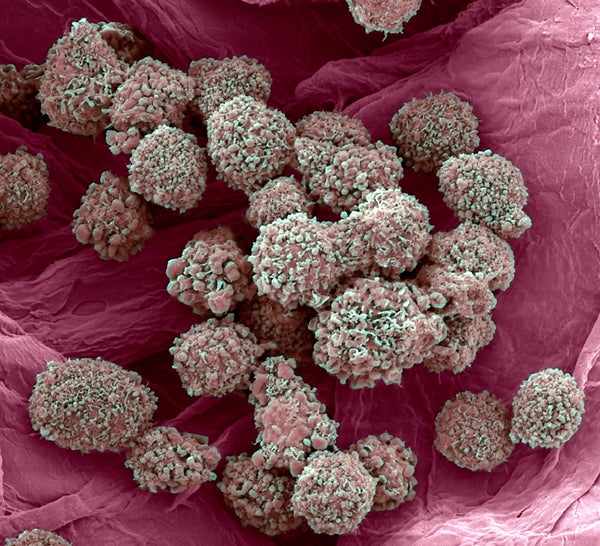This article was published in Scientific American’s former blog network and reflects the views of the author, not necessarily those of Scientific American
Although National Breast Cancer Awareness Month started in 1985, more than three decades ago, some women are still not getting mammograms when they should.
Reports in recent years showing a decline in the number of women receiving mammograms are especially concerning when you consider a woman in the United States has a one-in-eight risk of being diagnosed with breast cancer over the course of her lifetime.
What is holding women back from getting this important screening? We know skipping mammograms can lead to missed cancers. In fact, even for women age 50 or older, skipping a mammogram every other year may result in up to 30 percent of cancers being undetected.
On supporting science journalism
If you're enjoying this article, consider supporting our award-winning journalism by subscribing. By purchasing a subscription you are helping to ensure the future of impactful stories about the discoveries and ideas shaping our world today.
We also understand the critical role annual screenings play in detecting breast cancer at an earlier stage, when treatment is more likely to be successful. Statistics show mammography has helped reduce breast cancer mortality in the U.S. by nearly 40 percent since 1990. Further, technological advances in mammography systems—such as digital breast tomosynthesis, otherwise known as 3-D mammography—have improved screening accuracy so patients are able to be treated earlier and more precisely.
While the reasons women may not be getting mammograms are certainly varied and complex, a new national survey points to the discomfort, pain and stress associated with these screenings as important factors. The survey, which was commissioned by Siemens Healthineers and conducted by HealthyWomen, featured responses from 1,194 women 40 and older regarding their experiences with and perceptions of mammograms.
The survey found that one of the top three reasons women have not yet obtained a mammogram is due to being “worried it will hurt.” For the approximately 10 percent of respondents who stopped receiving mammograms on an annual or bi-annual basis, 32 percent cited unpleasant and/or painful past experiences as a deterrent. Also interesting: 46 percent of women who have not yet been screened report they “haven’t gotten around to it,” which points to a potential lack of convenience in obtaining a mammogram.
Many may think that the discomfort and inconvenience associated with mammograms is a given, and that women just have to “put up with it” in the best interest of their health. Women, health advocates, and health care professionals take note: not all mammography experiences need be the same.
Experiences and facilities can be designed to accommodate and provide personalized care to help health care professionals meet their patients’ needs. For example, to better accommodate patients, health care professionals can increase access and convenience by offering screenings within the same facility (versus referring to an outside radiologist) and also by offering quick results reporting, patient portals and extended office hours. Physician offices can also differentiate their services by offering mammography systems that personalize compression to the patient.
The bottom line is that women and their health advocates, clinicians and industry all have a role to play in addressing the needs and concerns women have about this important test. In our role as manufacturers, we must continue to advance breast screening technology so that health care professionals can provide the best possible care—and peace of mind—to their female patients.
